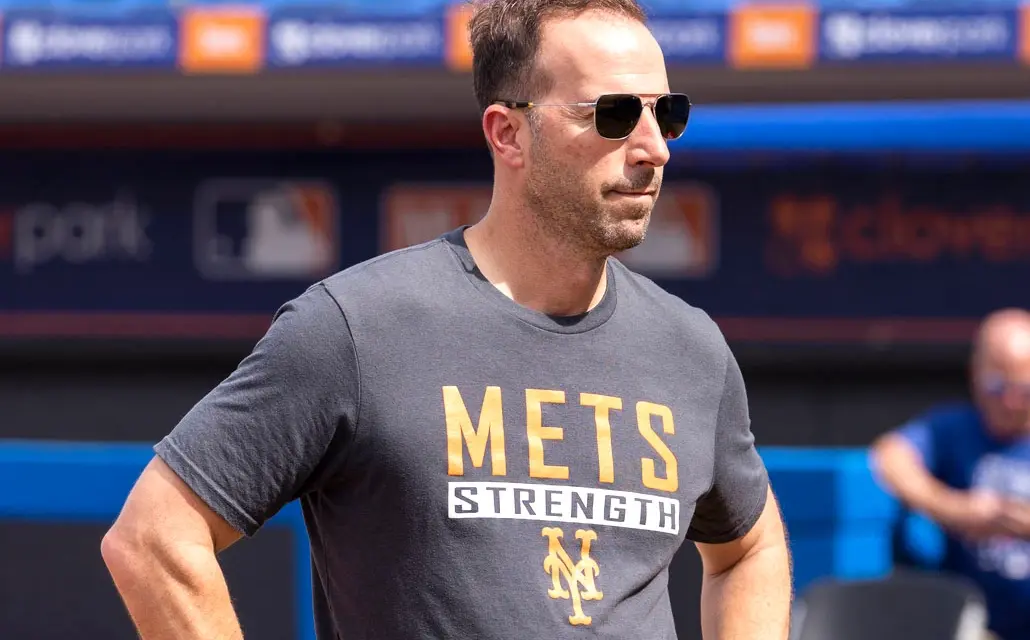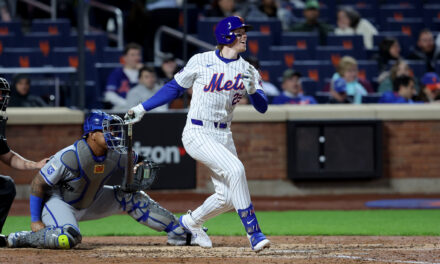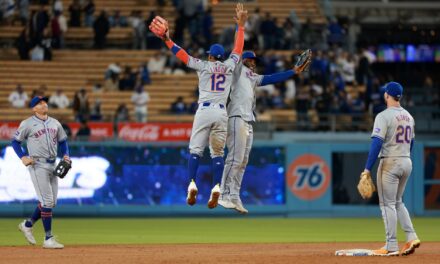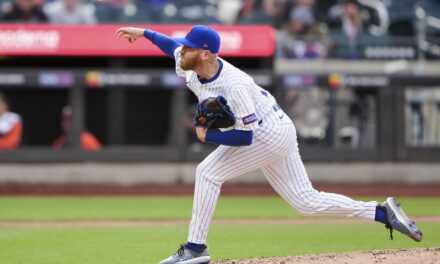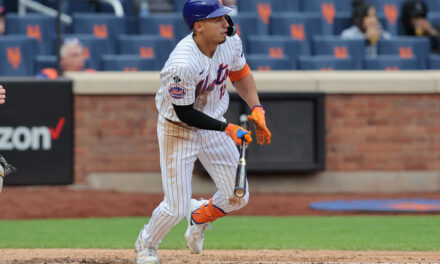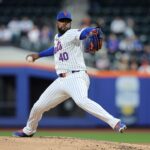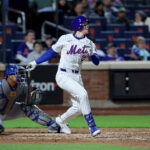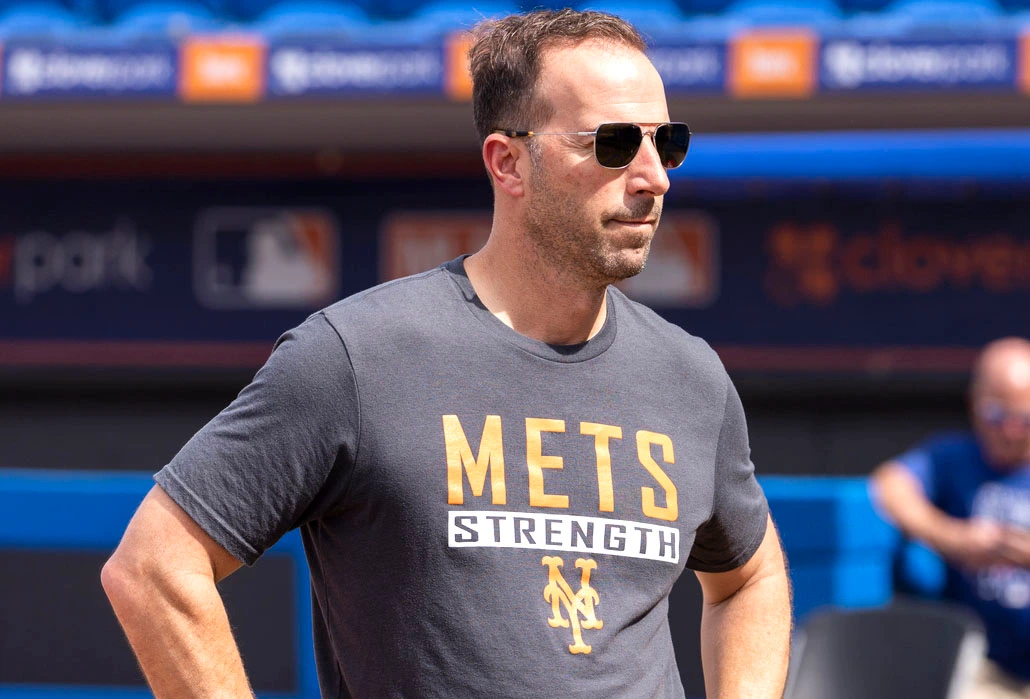
Photo Credit: Corey Sipkin of New York Post
Through the All-Star break, the Mets are currently sitting at 58-35 and have a 2.5-game lead over the defending champion Atlanta Braves in the National League East. It is the first Mets team to be 23 games over .500 since the 2006 team. So how did we get here?
On November 18, 2021, the Mets signed Billy Eppler to a four-year contract to be the team’s new general manager. After a disappointing finish to the 2021 season, Eppler had plenty of decisions to make on how to put this team over the top.
Just 12 days later, Eppler flexed his muscle (and Steve Cohen’s wallet) when he signed Eduardo Escobar, Mark Canha, and Starling Marte all within a few hours of each other. The next day, Eppler made his biggest splash of the winter when he signed Max Scherzer to a monster three-year, $130 million contract.
Eppler’s four big additions have all contributed to the Mets’ terrific first half.
Despite missing nearly two months with an oblique injury, Scherzer has been as dominant as ever when he is on the mound. The 37-year-old right-hander is 6-1 in his 11 starts and has pitched to a 2.22 ERA/2.37 FIP with a 0.88 WHIP in 69 innings with 90 strikeouts and just 12 walks.
Marte made his second career All-Star appearance in his first year in New York. His slash line of .295/.345/.458 nearly mirrors his career .290/.346/.452 slash line, which is exactly what Eppler and the Mets were hoping to get from the 33-year-old veteran. Although he is not stealing bases at the rate he did in 2021, his 12 steals are already just two short of the total that Jonathan Villar led the team with last season. Between his ability to maintain a high average and on-base percentage, his speed on the bases, and his defense in right field, Marte has been a terrific fit in the Mets’ lineup.
Canha, like Marte, has added depth to the lineup with his ability to get on base. The former Oakland Athletic has a slash line of .269/.370/.381 in 77 games to start his Mets career. Canha’s approach at the plate is a lot like a right-handed Brandon Nimmo. He knows how to work the count, and he is seventh in MLB in pitches seen per plate appearance. Canha may not be a star, but having a hitter like him in the lineup is certainly a big factor in why the Mets are in the top five in on-base percentage and runs while being in the bottom five in strikeouts.
So far, 2022 hasn’t been the year Eppler and the Mets had hoped it would be for Escobar. The Venezuelan third baseman is hitting just .224/.279/.397 in 86 games. Despite the low overall numbers, Escobar is third on the team with 11 home runs. He has struggled mightily against right-handed pitching but has excelled against left-handed pitching. Against lefties, Escobar is hitting .265/.300/.529 with five of his 11 home runs despite having less than half as many at-bats from the right side. In 2021, Escobar made his first career All-Star appearance. Although he hasn’t matched last year’s output, his .310/.355/.586 slash line in the final week before the break is an encouraging sign that he can still be a difference maker for the Mets and make the lineup even deeper.
Once MLB’s lockout came to an end, the Mets rounded out their rotation by making a deal with the Athletics for 2021 All-Star Chris Bassitt. Bassitt was terrific through the first six weeks of the season, pitching to a 2.34 ERA/3.37 FIP. He was roughed up over his next five starts which nearly doubled his ERA, but he has bounced back with five strong starts to wrap up the first half. Overall, Bassitt has pitched to a 3.79 ERA/3.83 FIP over 102 innings.
While his big acquisitions have all made a difference this season, Eppler has made under-the-radar moves that have played a big role in the Mets’ strong start to the season.
On March 14, Eppler signed Adam Ottavino to a one-year deal worth $4 million. After struggling in the shortened 2020 season, the Yankees traded Ottavino to the Red Sox of all places just to get out of the last year of his contract. He didn’t fare much better in Boston in 2021, but so far this season, he is having one of the best seasons of his career. The New York native has pitched to a 2.52 ERA/3.37 FIP with a 0.98 WHIP over 35 2/3 innings. He has cut his walk rate in half from last season from 5.1 BB/9 to 2.5 BB/9 and has been a bright spot in the Mets’ bullpen.
Just days before Opening Day, the Mets and Yankees made a rare trade. The Mets acquired Joely Rodriguez from the Yankees for Miguel Castro. With Aaron Loup departing for the Angels, the Mets needed another left-handed reliever. Over 27 innings, Rodriguez has pitched to a 4.67 ERA/3.15 FIP so far this season. He’ll need to improve on his 5.7 BB/9, but with lefties hitting just .204 against him despite a .345 BAbip, there is reason to believe he can improve on his overall numbers in the second half.
Even some depth acquisitions have been a big part of the team’s first half success. Adonis Medina and Yoan Lopez were both acquired just before the season. They have both gone up and down between Triple-A Syracuse and the Mets, but they have both been extremely productive when they are called upon. Eppler’s ability to find value in other team’s castaways has been huge for a team that has struggled with relief pitching over the years.
Despite all the successful moves by Eppler, we still saw some things in the first half that can make you question why they weren’t addressed sooner. Both Robinson Cano and Chasen Shreve were cut in the early stages of the season after being given a chance to win important roles. As we move into the second half of the season, the Mets have gotten almost no production from the DH spot, and Rodriguez is the only lefty in the bullpen.
Grade: A
With the amount of moves Eppler made, his success rate is a major factor in why the Mets are on pace to have one of the best seasons in the history of the franchise. He may not have been perfect, but he came as close to it as any general manager can and has shown a willingness to go out and do what it takes to get what the team needs. It would be surprising if Eppler doesn’t make the moves to address the Mets’ few holes before the August 2 trade deadline.
Make sure to read the grades we previously did for designated hitters, infielders, outfielders, relievers, starting pitchers, and coaching staff.


